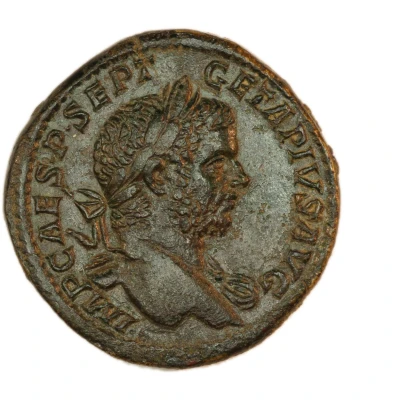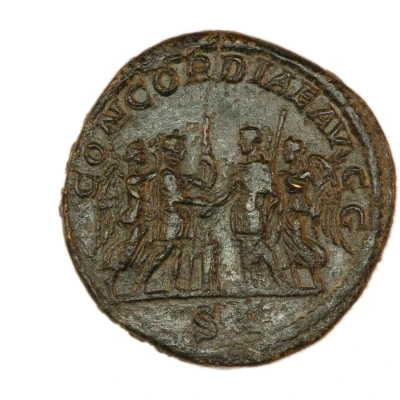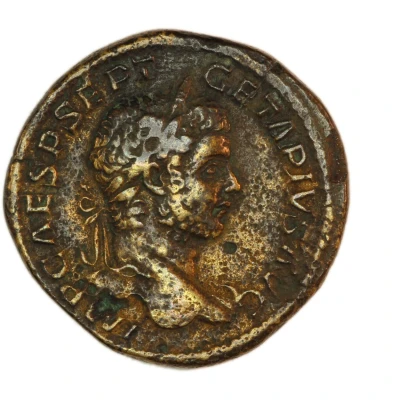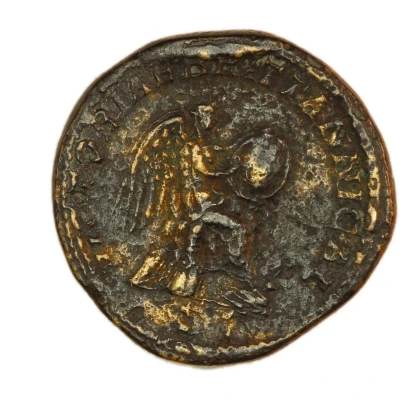


© Trustees of the British Museum
Sestertius - Geta and Caracalla CONCORDIAE AVGG S C; Victory
| Bronze | 28.5 g | - |
| Issuer | Rome › Roman Empire (27 BC - 395 AD) |
|---|---|
| Emperor | Geta (Publius Septimius Geta) (209-211) |
| Type | Standard circulation coin |
| Years | 209-210 |
| Value | 1 Sestertius = ¼ Denarius |
| Currency | Denarius, Reform of Augustus (27 BC – AD 215) |
| Composition | Bronze |
| Weight | 28.5 g |
| Shape | Round (irregular) |
| Technique | Hammered |
| Demonetized | Yes |
| Updated | 2024-10-06 |
| Numista | N#271871 |
|---|---|
| Rarity index | 100% |
Reverse
Caracalla and Geta, in military attire, standing right and left facing each other, clasping right hands ove altar and holding spears in left hands, each crowned by Victory.
Script: Latin
Lettering: CONCORDIAE AVGG S C
Translation:
Concordiae Augustorum. Senatus Consultum.
To the harmony of the emperors (Augusti). Decree of the senate.
Comment
Example of this type:Trustees of the British Museum
Source:
Online Coins of the Roman Empire (OCRE)
Interesting fact
One interesting fact about this coin is that it features the Roman goddess Victory (Victoria) on the reverse side, which was a common motif on Roman coins during this period. The image of Victory was meant to symbolize the power and dominance of the Roman Empire, and it was often depicted holding a wreath or a palm branch, as seen on this particular coin. The use of Victory as a symbol of Roman supremacy was a way for the empire to assert its authority and influence over its territories and subjects.

